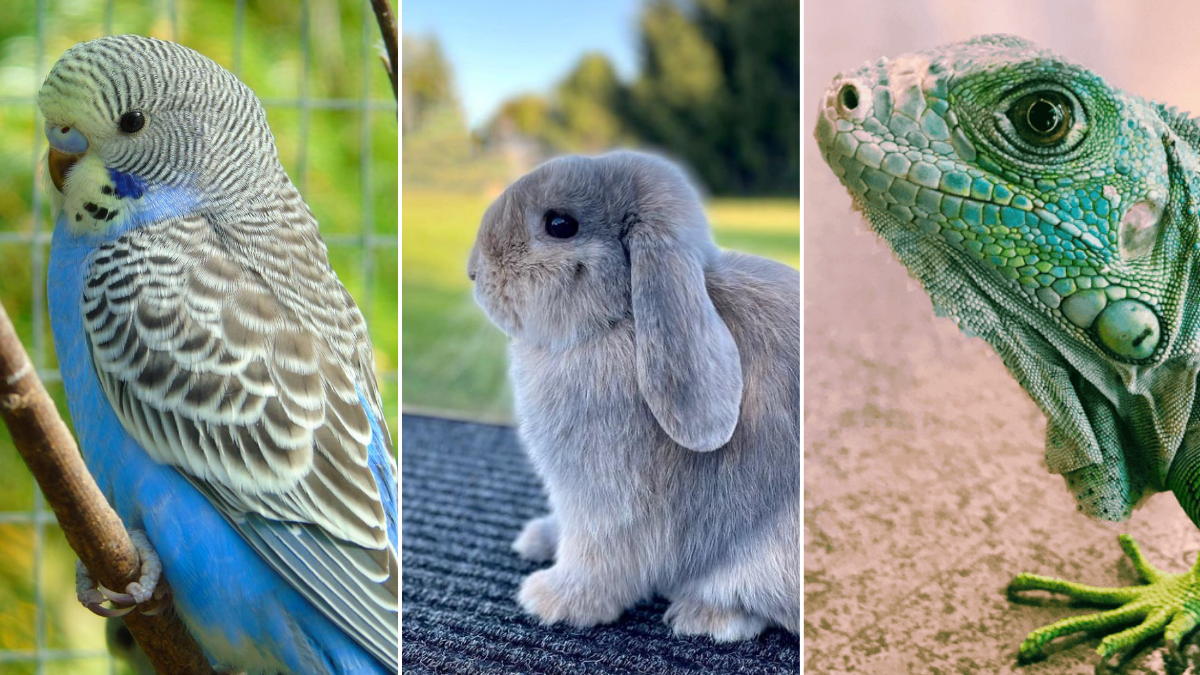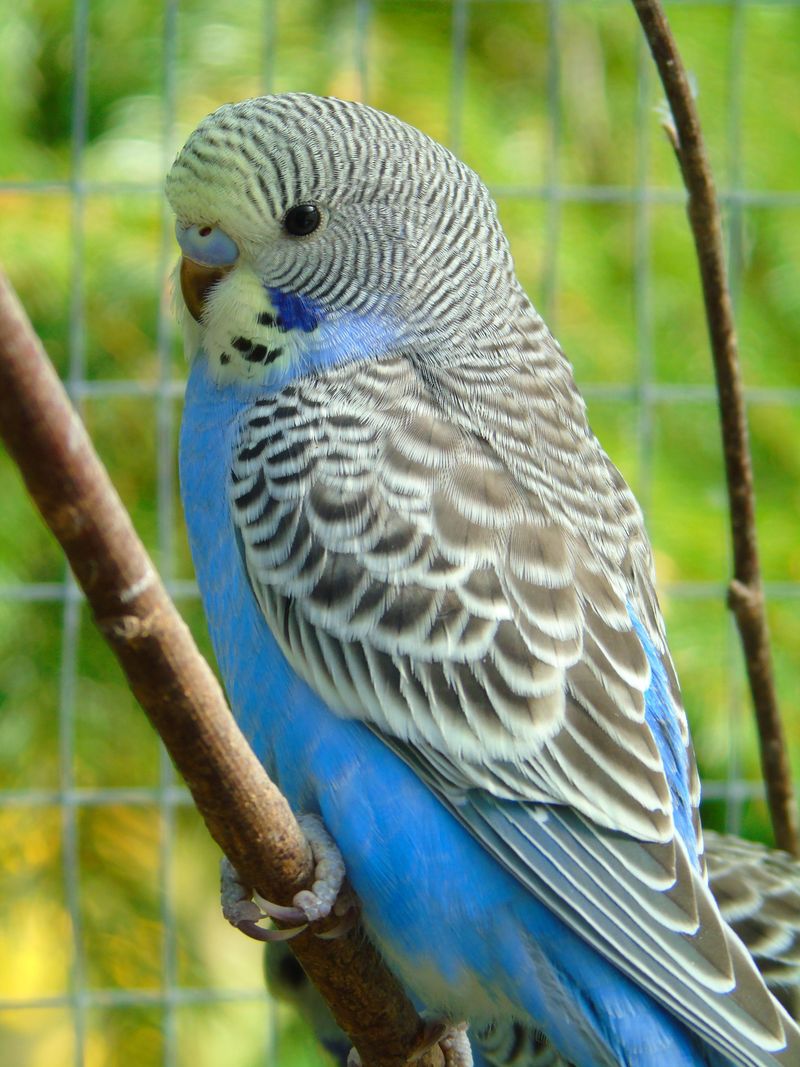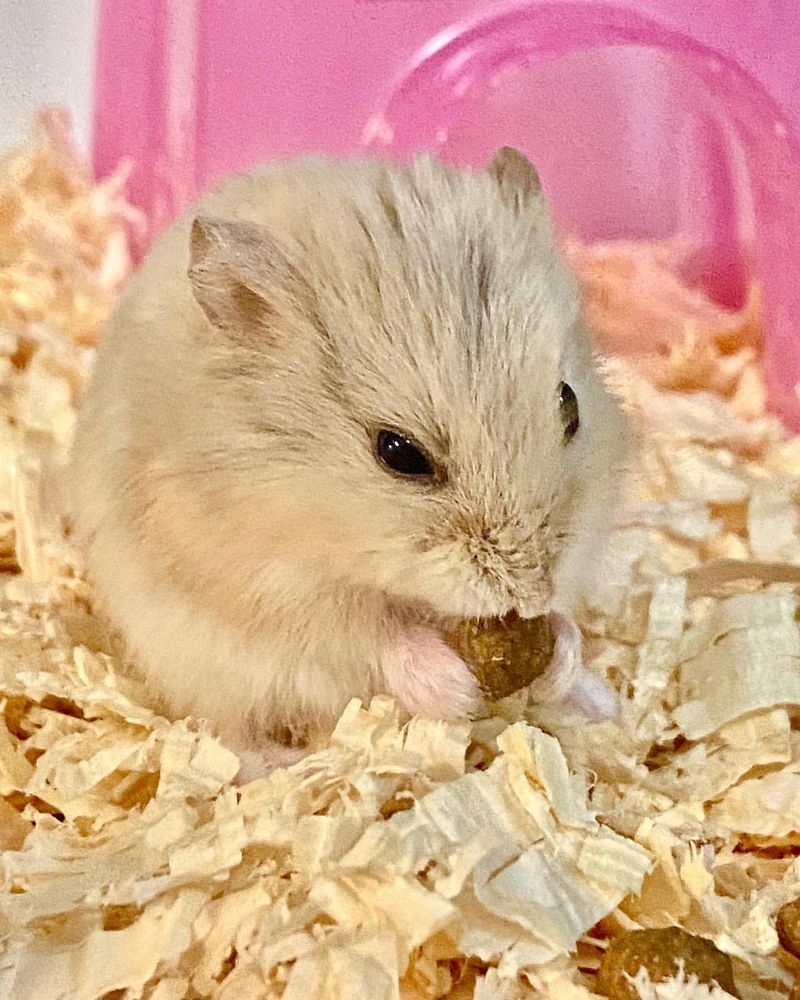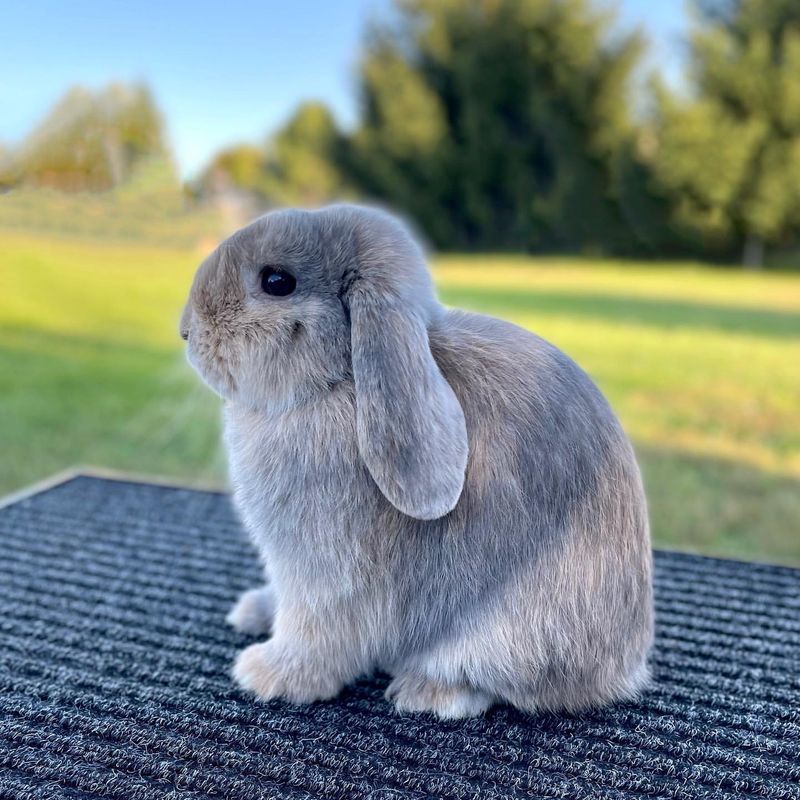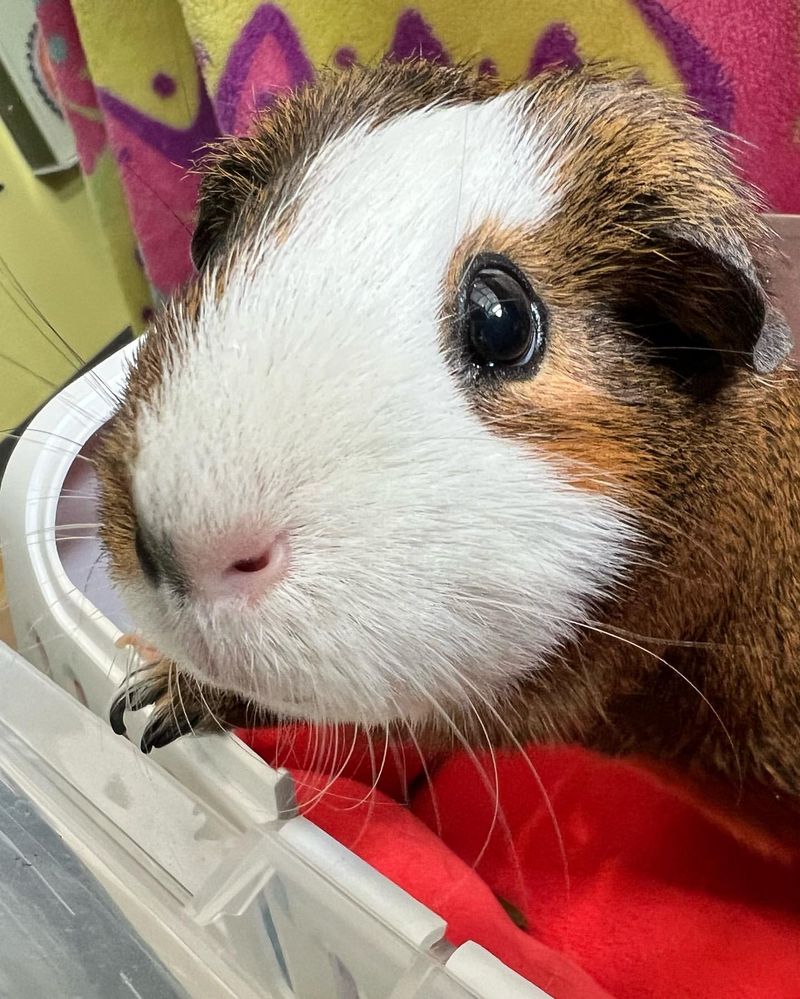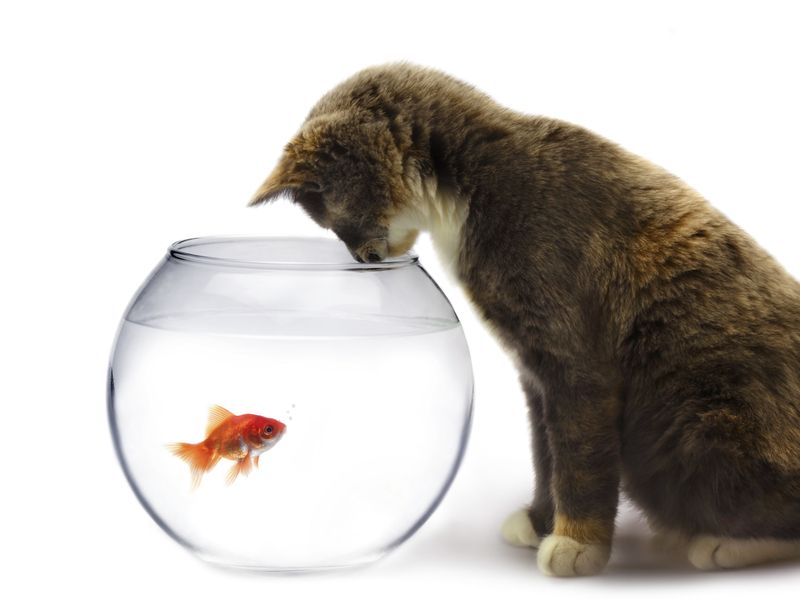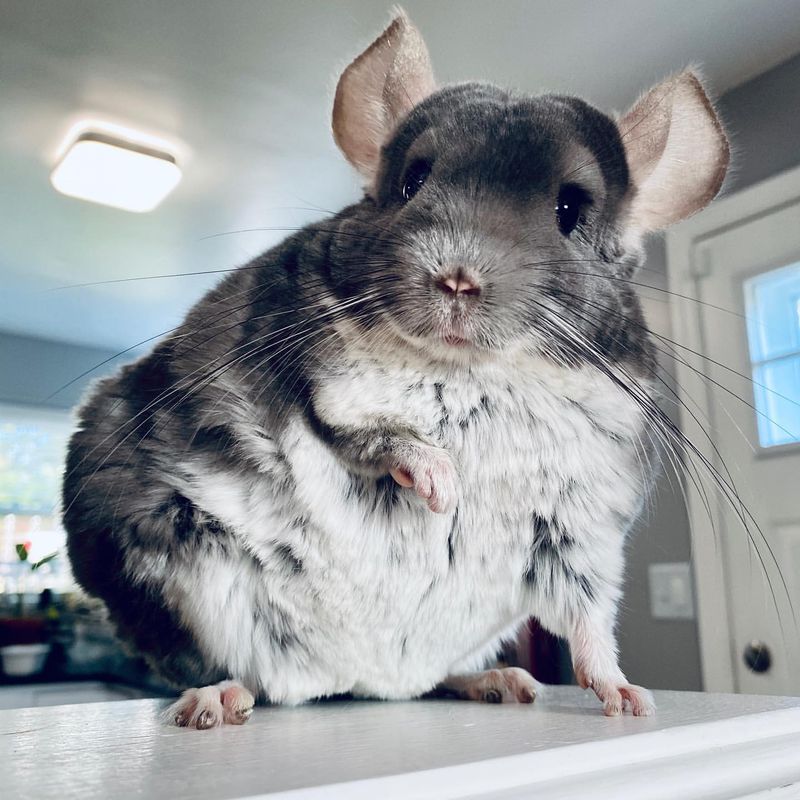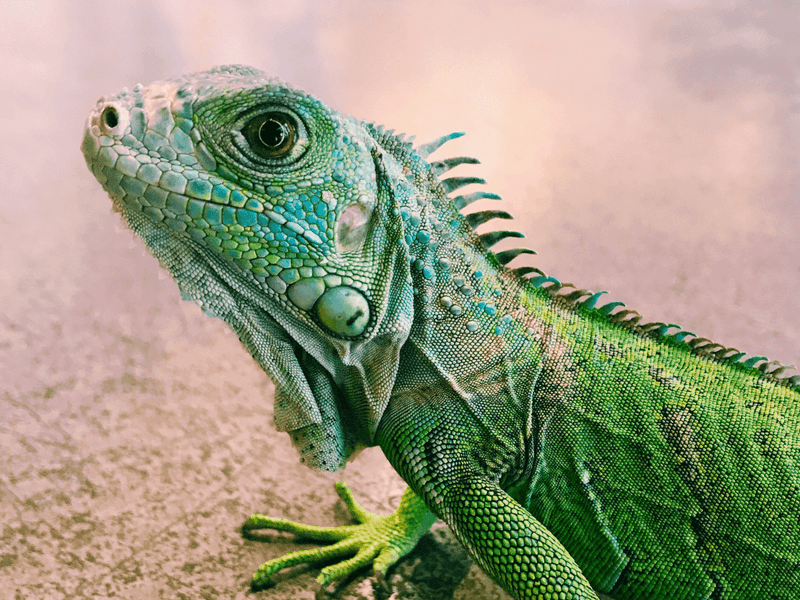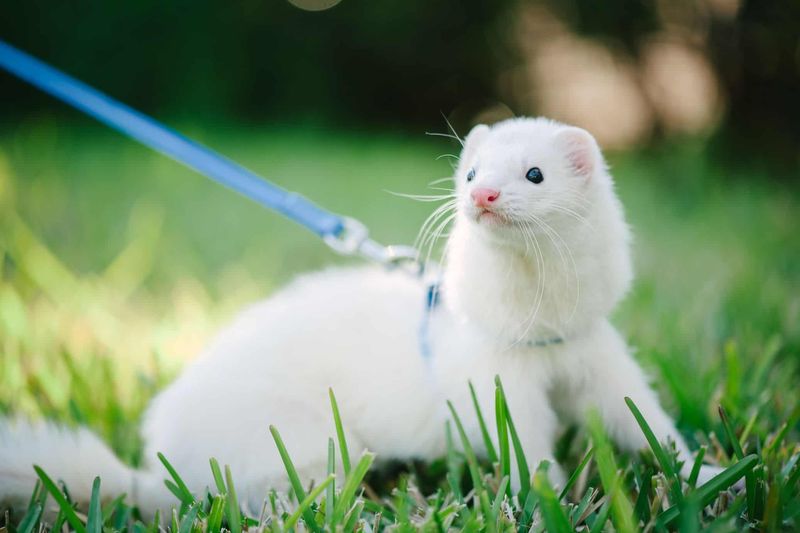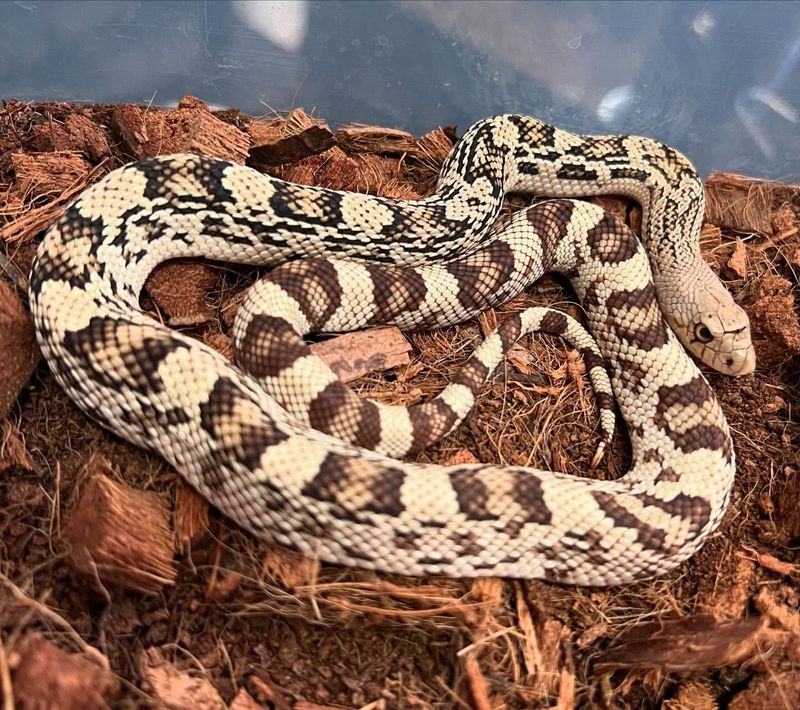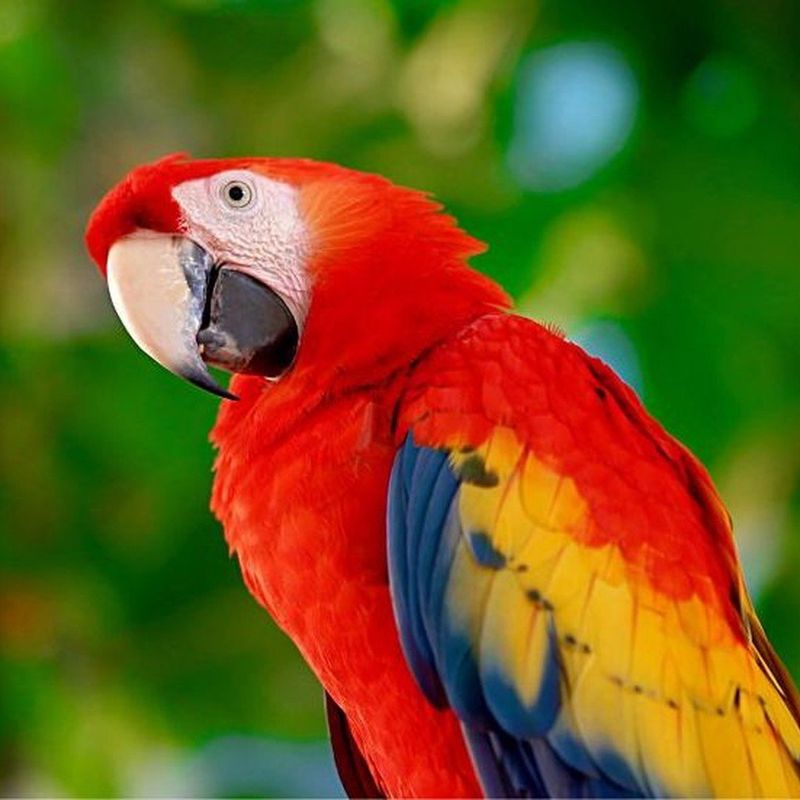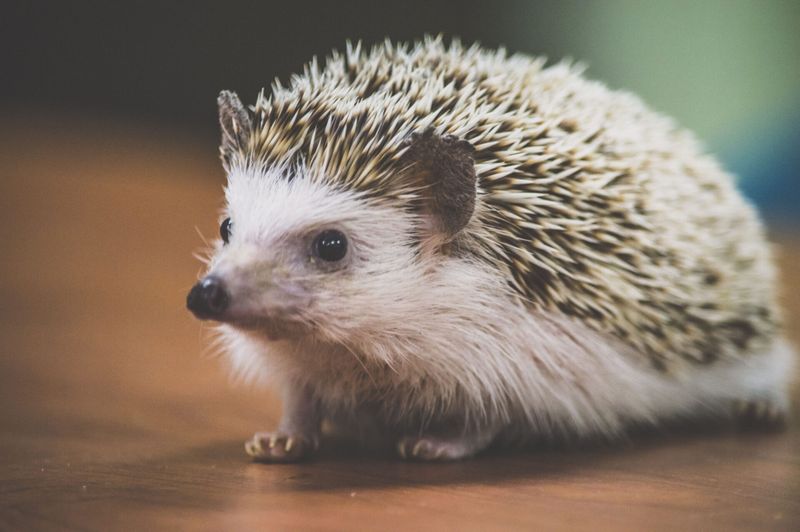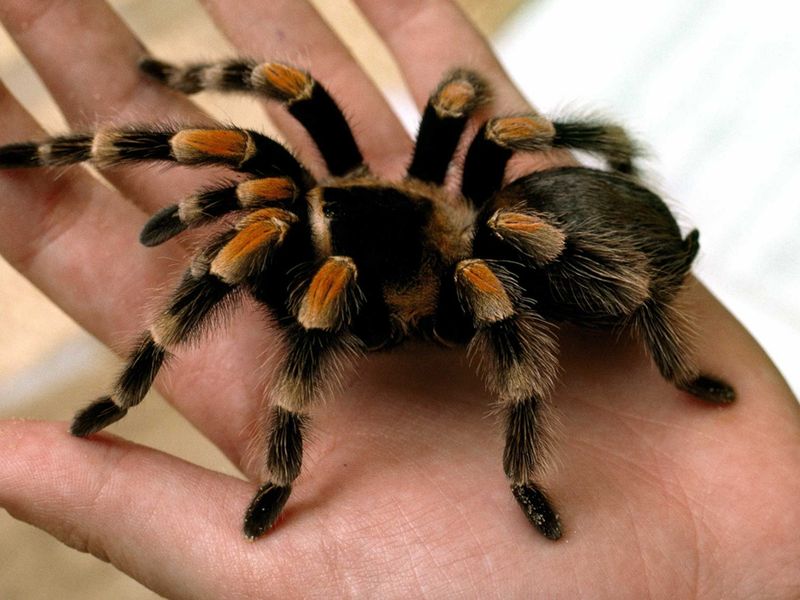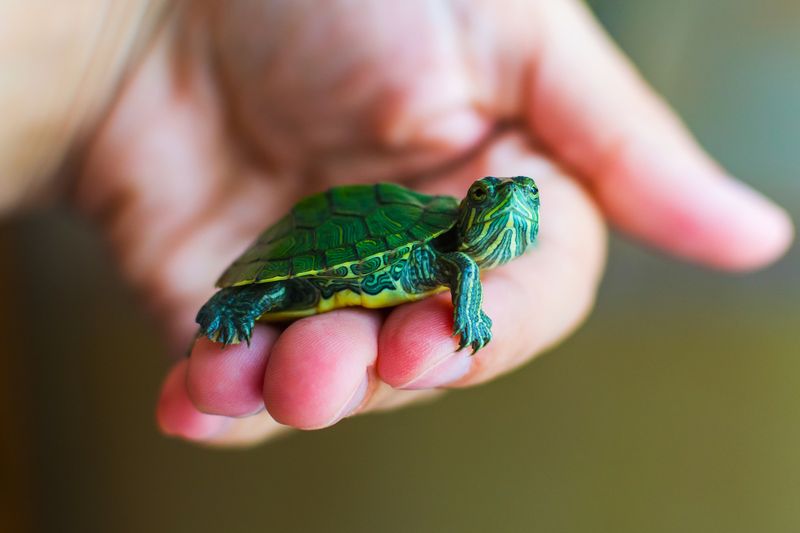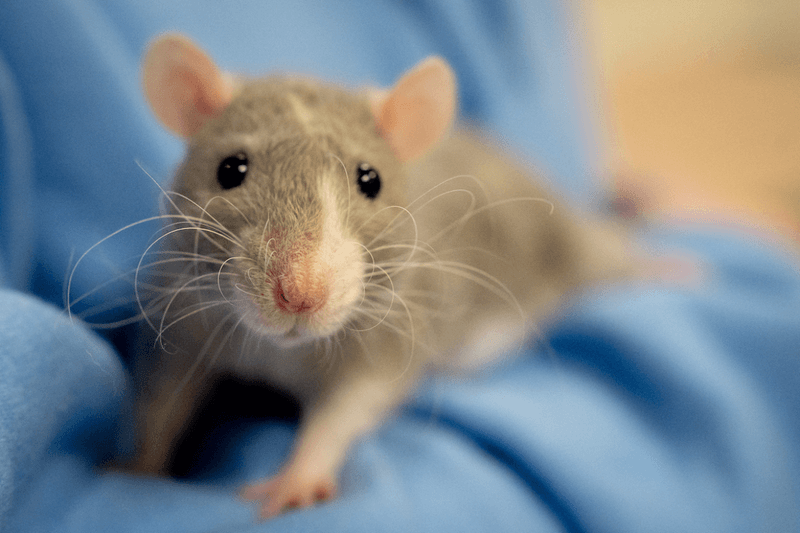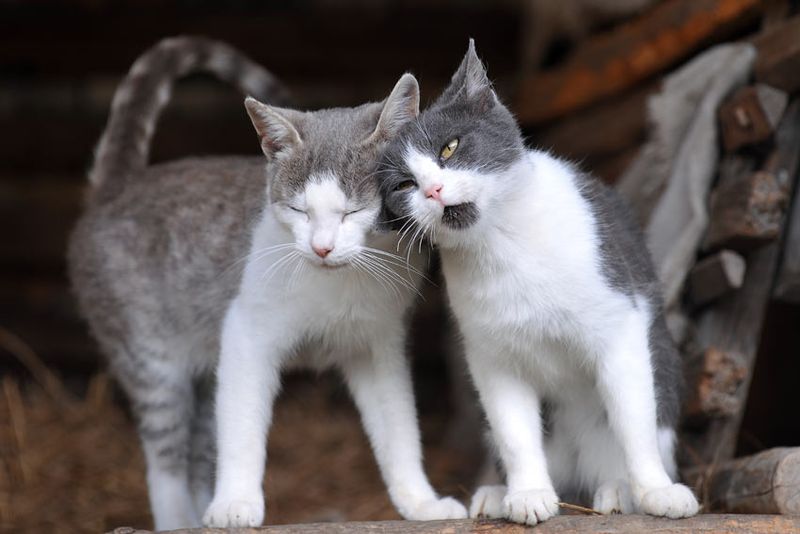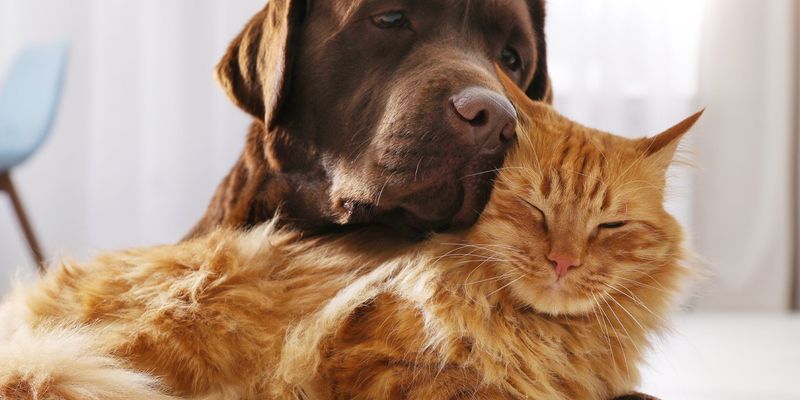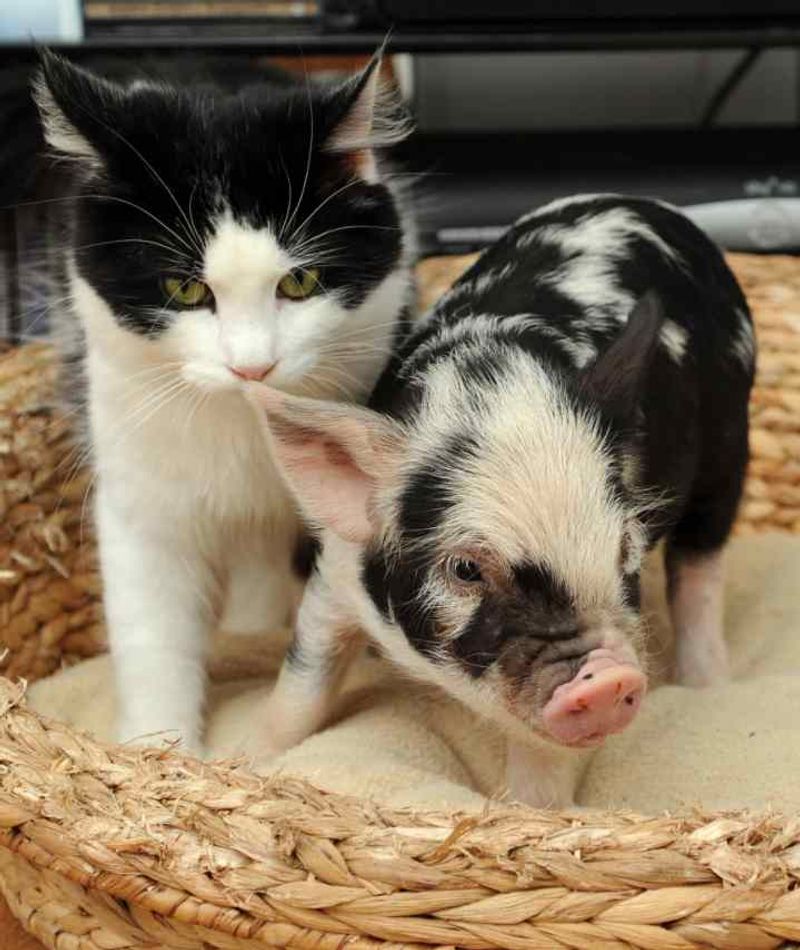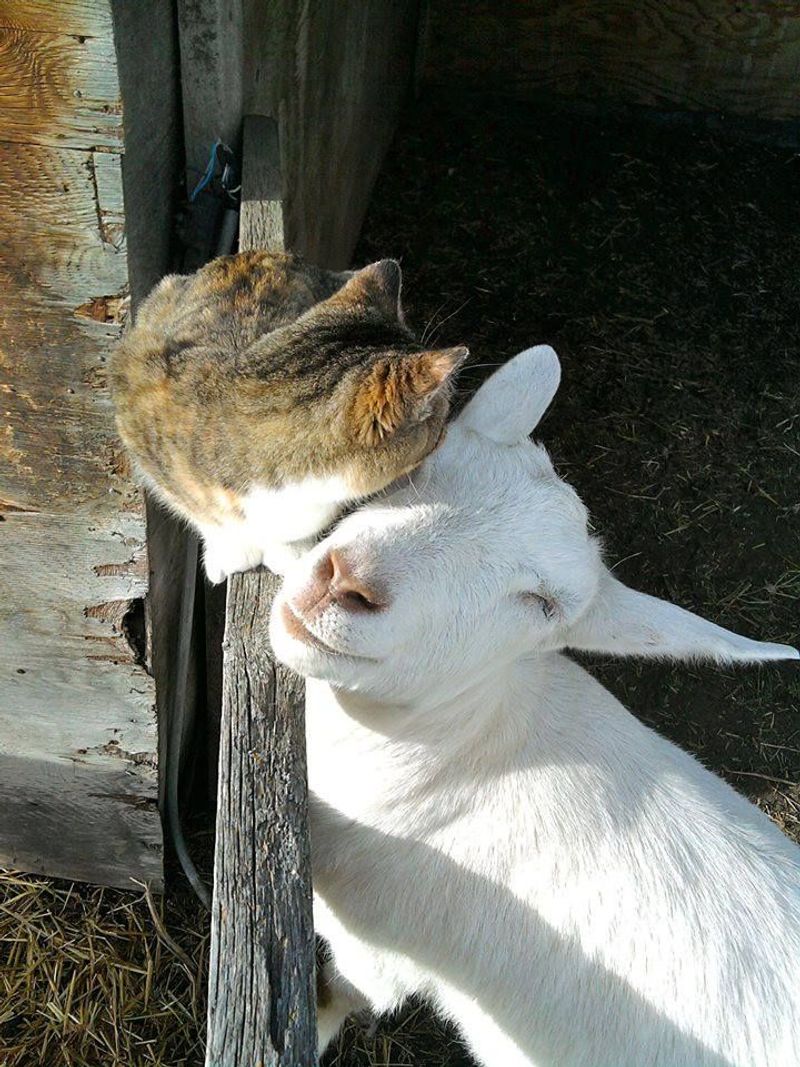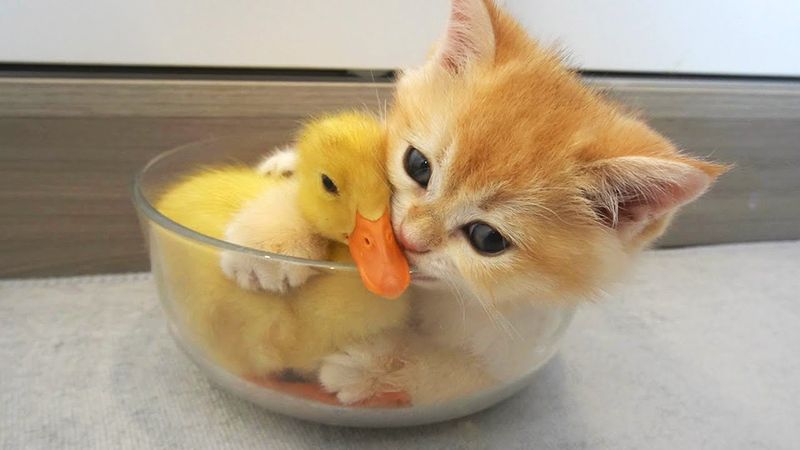📖 Table of Content:
Not every pet makes a good roommate—especially when your cat’s involved. While some animals are chill companions, others can spark instant tension, turning your peaceful home into a battleground of hisses, stares, and chaos. Whether it’s about territory, temperament, or just plain instinct, certain pairings are better left unrealized.
Cats are creatures of habit and comfort. Introducing the wrong pet can disrupt their routine, cause stress, and even lead to behavioral issues. From overly energetic pups to tiny prey-like pets, some animals just don’t click with feline vibes.
On the flip side, there are animals that cats not only tolerate but sometimes genuinely enjoy having around. These rare friendships happen when personalities align, boundaries are respected, and energy levels match. If you’re thinking of expanding your furry family, choosing the right companion could mean the start of a surprising and sweet interspecies bond.
1. Parakeet
Parakeets, known for their vibrant colors and cheerful chirps, can appear to be a delightful choice. However, their quick movements and high-pitched sounds may provoke a cat’s hunting instincts. These little birds are easily stressed by the presence of a predator, and their cages might not always offer enough protection.
Considering this, keeping a parakeet around a cat may lead to constant anxiety for the bird and frustration for the cat, as it cannot satisfy its predatory urges.
2. Hamster
These small pets are cute and entertaining, often running around on their wheels or burrowing into their bedding. However, their small size makes them vulnerable. Cats, natural hunters, may see hamsters as prey, potentially pawing at the cage incessantly.
This can cause immense stress for the hamster and lead to potential health issues. Protecting the hamster from a curious or persistent cat becomes a round-the-clock job, making it a challenging pet choice.
3. Rabbit
Rabbits, with their fluffy tails and gentle nature, might seem like they could get along with cats. However, their skittish demeanor can make them a poor match. Cats may view rabbits as playthings or potential prey, leading to constant chasing or stalking.
Rabbits can be easily frightened, causing them stress and anxiety. A household with both may require constant supervision to keep peace and ensure both animals’ well-being.
4. Guinea Pig
Recognized for their gentle nature, Guinea pigs may struggle in environments where cats are allowed to roam freely. Their small size and squeaky sounds can inadvertently draw a cat’s attention. The continuous presence of a predator can lead to chronic stress for the guinea pig, affecting its health.
Creating a secure, cat-proof environment for a guinea pig can be difficult, leading to a lot of extra work for the owner.
5. Fish
Fish, serene and beautiful, are a popular choice for pet owners. However, they are not an ideal fit for homes with curious cats. Cats are often fascinated by the movement of fish and may attempt to reach into tanks or knock them over.
This can result in broken aquariums and harm to the fish. Ensuring a cat-proof setup can be a challenge, requiring sturdy tanks and secure lids.
6. Chinchilla
With their soft fur and playful nature, chinchillas make appealing pets. However, they need a calm environment, which can be difficult to achieve with a cat around. Cats might perceive chinchillas as toys or prey, resulting in stressful interactions.
Chinchillas also have delicate bones and can be easily injured, making them unsuitable in homes where they might encounter aggressive or overly curious cats.
7. Reptile
Reptiles, such as lizards, are fascinating pets that offer a unique experience. However, they often pique the curiosity of cats, which may attempt to paw at or play with these creatures, potentially causing stress or injury.
Many reptiles need specific environmental conditions, which can be disturbed by a cat’s interference, making it difficult to maintain an appropriate habitat.
8. Ferret
Energetic and mischievous, ferrets often explore every nook and cranny. However, their high energy can result in conflicts with cats. Ferrets may provoke a cat’s hunting instincts, which can lead to aggressive behavior.
Additionally, their small size makes them susceptible to injury from cats, making them a less-than-ideal companion in a cat-friendly home.
9. Small Dog
Small dogs may initially seem like a perfect companion for a cat, but their personalities often clash. Dogs can be loud and boisterous, unsettling a cat’s calm demeanor. Cats might not appreciate the dog’s playful advances, leading to territorial disputes.
Such interactions can cause stress for both animals, requiring careful management and training to ensure a peaceful coexistence.
10. Snake
With their slithery movement, snakes intrigue many pet owners but can be problematic with cats. Cats may see snakes as a threat or prey, resulting in risky interactions. Snakes require carefully controlled environments, which can be disturbed by a curious cat.
This can lead to stress for the snake and potential accidents, making them a challenging pet to have alongside a cat.
11. Large Bird
Large birds, like parrots, are intelligent and social but can be quite loud, which might irritate a cat.
Their size doesn’t deter a cat from attempting to engage with them, potentially leading to harmful encounters.
Maintaining peace between a cat and a large bird can be demanding, requiring careful supervision and secure enclosures.
12. Hedgehog
Hedgehogs, with their unique appearance and nocturnal habits, might not mesh well with cats. Cats may be intrigued by their spiky exterior, leading to unwanted interactions. Hedgehogs can become stressed with too much attention from a cat.
Providing the right environment for both pets becomes a balancing act, often requiring separate areas to ensure safety and reduce stress.
13. Tarantula
Tarantulas, often chosen for their unique appearance, are not ideal for homes with cats. Cats may try to play with or hunt them, leading to potential harm. Their delicate nature makes them susceptible to injury from curious cats.
Thus, maintaining a tarantula requires ensuring its habitat is secure and out of reach, which can be challenging.
14. Turtle
Turtles are often seen as low-maintenance pets, but their slow nature can incite a cat’s hunting instincts.
While turtles are protected by their shells, cats may still paw at them, causing stress or injury.
Providing a safe and undisturbed environment for turtles can be difficult, especially with a curious cat eager to interact.
15. Rat
Rats, known for their intelligence, can make fascinating pets. However, their small size and quick movements can draw a cat’s attention. Cats may view rats as prey, which can lead to constant stress for the rat.
Ensuring the rat’s safety requires secure, cat-proof enclosures, making it demanding to provide a harmonious environment for both animals.
1. Another Cat
Introducing another cat into your household can be a fantastic way to provide companionship for your feline friend. Cats are social creatures and often enjoy the presence of another cat to play with and groom. Initially, you might witness some hissing or cautious behavior, but don’t worry. Over time, they usually grow close, sharing sunlit naps and playful swats.
To make the introduction smoother, ensure each cat has its own space and resources like food bowls, litter boxes, and beds to prevent territorial disputes. A gradual, sensitive introduction can foster a lifelong friendship between them.
2. Medium-Sized Dog
Medium-sized dogs, like the gentle Labrador or the playful Beagle, often become great pals with cats. Their friendly demeanor and playful spirit can match well with a cat’s curiosity. Initially, you might find them sniffing and observing each other, like detectives on a case.
In a matter of weeks, they can form an inseparable bond, sharing toys and even engaging in friendly chases around the house. Supervised introductions and positive reinforcement can ease the transition, ensuring both pets feel safe and cherished. This companionship can enrich their lives with joy and excitement.
3. Miniature Pig
With their sharp minds and gentle personalities, miniature pigs often make great companions for cats. They’re curious, friendly, and surprisingly in sync with feline habits. It’s not unusual to see them lounging together or exploring their surroundings in quiet harmony.
Their mutual respect and gentle interactions are heartwarming, fostering a unique friendship that defies species. To maintain harmony, ensure both have their personal spaces and enough mental stimulation. A shared environment where they can coexist happily leads to delightful moments and a bond that’s both surprising and endearing.
4. Goat
Goats and cats? Oddly perfect. One’s a jumper, the other a climber—and both are endlessly curious. Together, they’re a playful, unpredictable pair.
Cats can be intrigued by a goat’s lively behavior and may join in their playful escapades. Proper introductions and a safe space for both can help cultivate a harmonious relationship. With time, they might even be found resting together in the shade, sharing the serene moments of a sunny day.
5. Duck
Ducks might seem like an unusual choice, but their calm demeanor can make them surprisingly pleasant companions for cats. Ducks’ gentle nature can soothe even the most aloof cat, creating a peaceful coexistence.
With time, they may share moments by the water, with the duck quacking softly and the cat purring contently. Ensure your duck’s environment is secure, preventing any unwanted escapades. This unusual duo can form a bond that’s both charming and unexpected, bringing a touch of nature’s harmony to your home.
